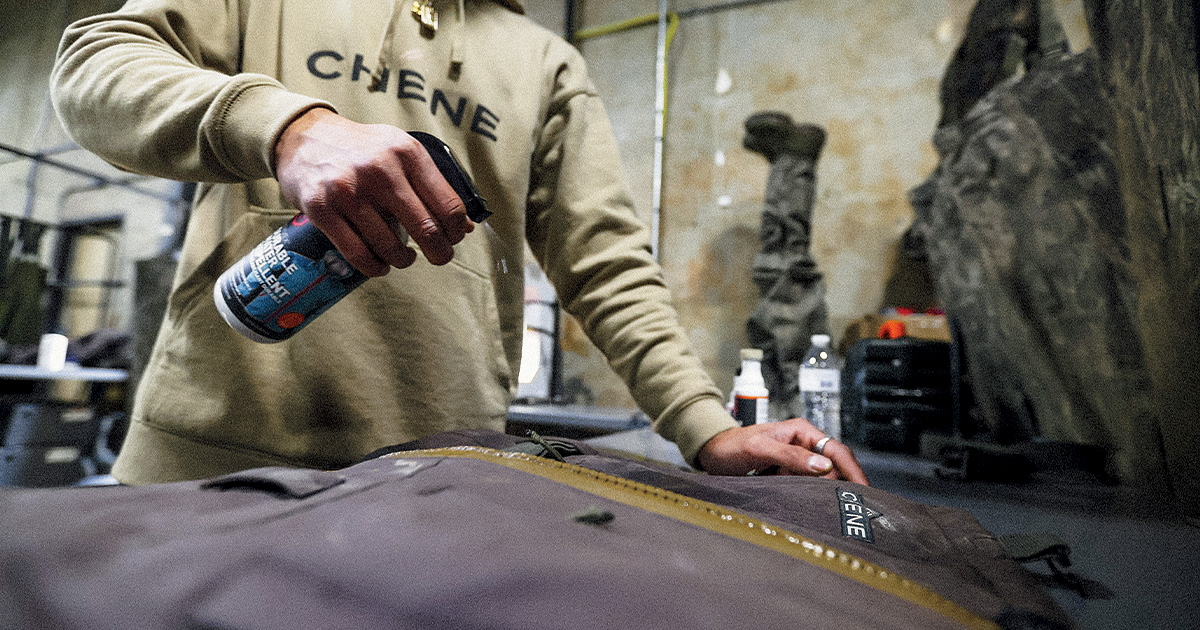Off-Season Gear Storage
Enhance your gear's performance and longevity by cleaning, maintaining, and storing it properly during the off-season
Enhance your gear's performance and longevity by cleaning, maintaining, and storing it properly during the off-season


Waterfowl hunters can add years to the life of this important piece of gear by performing a little off-season maintenance and storing them carefully. Field Norris, co-owner of Chêne Gear, follows a three-step process to care for his waders before storing them until the next hunting season. “The first thing that I’ll do at the end of every season is just wash them. I’ll use a rag and some light dish soap to simply wash the mud off,” Norris says. “Then I’ll lay them out flat in the sun to dry.”
The second step is to treat the exterior of the waders with a spray-on durable water repellent (DWR) that helps maintain the waterproof capabilities of the wader material. Norris uses a DWR from Gear Aid on both the front and the back of the waders.
The third step is to apply a gel cleaner and lubricant to both sides of the zipper, if your waders have one. “This helps protect against the grains of sand and mud that tend to get caught in the teeth of the zipper, which can cause some damage,” Norris says.
To store his waders, Norris hangs them from the shoulder strap (some waders also have a hanging tab) just high enough so that the bottom of the boot is touching the ground. “It should look like your waders are standing up by themselves, but there is no strain on the shoulder straps. You don’t want any creases along the seams or bunching of the material,” he says. Norris adds that if you don’t have a place to hang the waders, they can also be laid flat on the floor. “When it comes to waders, a little time and a little maintenance can really go a long way.”
For young hunters, summer is a great time to build confidence on the water by running a boat and motor, but if you plan on leaving your hunting rig in the shed, there are a few things you can do to make sure it is ready to go when the fall hunting season arrives.
Arkansas guide and hunter Rusty Creasey checks the boat itself for any wear and tear that may have occurred during the hunting season and then makes any necessary repairs. He does the same for the boat trailer, winch, chains, wiring harness, and lights.
“With the boat motor, I’ll take a look at the prop, change out the spark plugs, and try to use up what’s left in the gas cans or add a little fuel stabilizer if they’re going to sit for a while,” Creasey says. “Then, everything goes inside where it can stay high and dry until fall.”
If you haven’t emptied the shells from your blind bag, now would be a good time to do so, explains Jake Wallace with Winchester Ammunition. “Waterfowl ammunition, really any ammunition, should always be stored in a dry and cool location, preferably a place that is climate-controlled,” Wallace says, adding that hunters should avoid storing ammunition in areas that have large swings in temperature or humidity.
If you find any signs of corrosion or discoloring, Wallace recommends disposing of the ammunition in a safe and responsible manner, as those can be signs that the shells have been compromised by moisture. “In terms of the age of the shells, there really is no expiration date for ammunition that has been stored properly, but it is recommended that you only shoot newly purchased ammunition,” he adds.
Ducks Unlimited uses cookies to enhance your browsing experience, optimize site functionality, analyze traffic, and deliver personalized advertising through third parties. By continuing to use this site, you agree to our use of cookies. View Privacy Policy